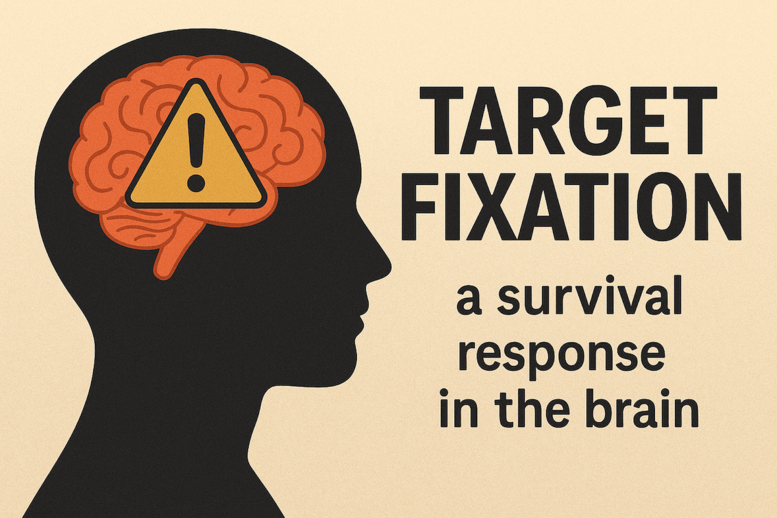Breaking Free from Target Fixation: How to Stay Grounded in the Heat of the Moment
Breaking
Free from Target Fixation: How to Stay Grounded in the Heat of the Moment
Have you ever found yourself in the middle of a conversation—perhaps with a colleague or a client—when suddenly your heart starts to race, your thoughts feel scrambled, and your words come out sharper than you intended? This isn’t just a passing moment of stress. It’s what we call target fixation: a state where your brain shifts from the logical, problem-solving side to the emotional, reactive side.
When this happens, your brain is essentially hijacked. Instead of calmly processing the situation, it reacts as though you’re facing a real threat. Neuroscientists often describe this using the “triune brain” model. At the top is the primate brain, which handles reason, logic, and planning. Beneath it lies the mammalian brain, which governs emotions. And at the core sits the reptilian brain, the oldest part of the brain, responsible for survival instincts.
When you feel disrespected, excluded, or unfairly treated, your amygdala can take over. In that instant, your body reacts as though a wild animal were standing in front of you. Whether it’s tough feedback from a manager or tension with a colleague, your brain interprets the situation as a physical threat.
What Triggers Target Fixation?
The triggers that set off this response usually fall into a few patterns. Sometimes it’s a status threat, where we feel disrespected. Other times it’s a power threat, when we lose control over decisions. There are also knowledge threats, which arise when we don’t have the information we need, and social threats, when we feel excluded or misunderstood. Finally, there are justice threats, when we sense unfairness directed at ourselves or others. Each of these has the potential to push us into fight, flight, or freeze mode.
How to Break Free
So how do you move past target fixation when it hits? A simple four-step framework can help.
The first step is to pause. Create a micro-moment for yourself—take a breath, close your eyes, or simply sit quietly for a beat. That pause is what allows your brain to shift gears.
Once you’ve created space, the next step is to reflect. Ask yourself: what assumptions am I making right now? What stories am I telling myself? And most importantly, what do I truly want for myself and for the other person in this situation? Reflection helps transform your perspective from reacting to realigning.
The third step is to unlock. This means choosing the right mindset. Let go of your ego and defensiveness, and approach the conversation with curiosity instead. When you focus on the desired outcome rather than the obstacle in front of you, the conversation changes.
Finally, only when you’re grounded should you respond. This isn’t about pretending you weren’t triggered. It’s about intentionally choosing how you want to show up in the moment. If you respond before you’re ready, you risk staying trapped in target fixation. But once you’ve regained control, you can re-engage with clarity and influence.
The Bigger Picture
Recovering from target fixation isn’t about perfection—things can still get messy. It’s about building awareness of your own triggers and learning how to shift before your reactions spiral out of control.
The next time you feel that rush of adrenaline, that rise in temperature, remember the sequence: pause, reflect, unlock, and respond. By following those steps, you’ll not only manage your own reactions but also lead with greater influence, even in the heat of the moment.
— Michael Wallace, Fascinnovation



Leave a comment